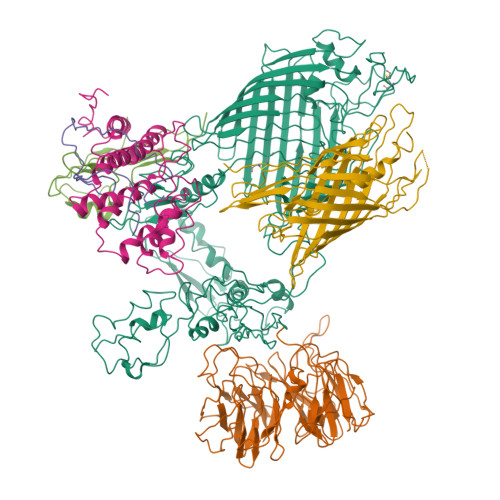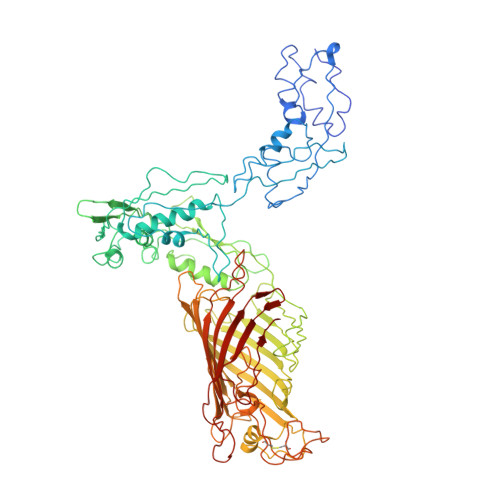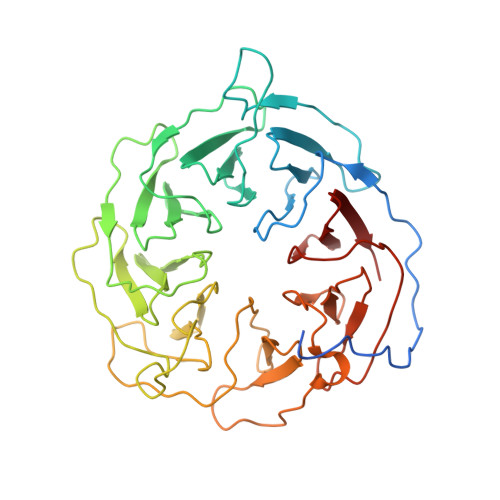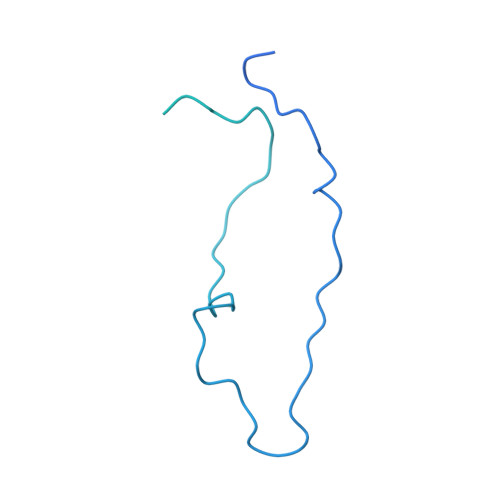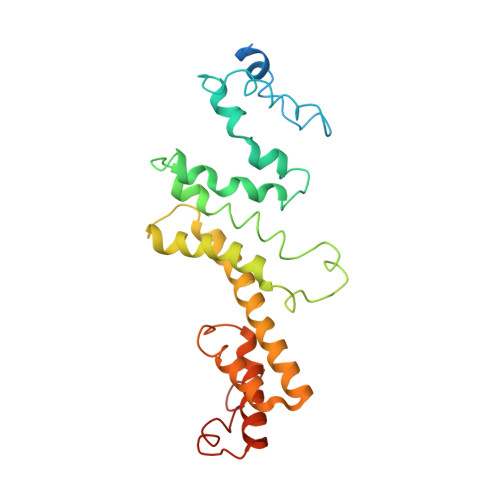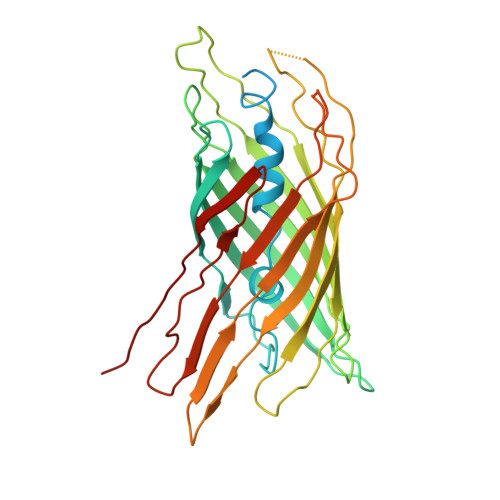Structural basis of BAM-mediated outer membrane beta-barrel protein assembly.
Shen, C., Chang, S., Luo, Q., Chan, K.C., Zhang, Z., Luo, B., Xie, T., Lu, G., Zhu, X., Wei, X., Dong, C., Zhou, R., Zhang, X., Tang, X., Dong, H.(2023) Nature 617: 185-193
- PubMed: 37100902
- DOI: https://doi.org/10.1038/s41586-023-05988-8
- Primary Citation of Related Structures:
7YE4, 7YE6, 8BNZ, 8BO2 - PubMed Abstract:
The outer membrane structure is common in Gram-negative bacteria, mitochondria and chloroplasts, and contains outer membrane β-barrel proteins (OMPs) that are essential interchange portals of materials 1-3 . All known OMPs share the antiparallel β-strand topology 4 , implicating a common evolutionary origin and conserved folding mechanism. Models have been proposed for bacterial β-barrel assembly machinery (BAM) to initiate OMP folding 5,6 ; however, mechanisms by which BAM proceeds to complete OMP assembly remain unclear. Here we report intermediate structures of BAM assembling an OMP substrate, EspP, demonstrating sequential conformational dynamics of BAM during the late stages of OMP assembly, which is further supported by molecular dynamics simulations. Mutagenic in vitro and in vivo assembly assays reveal functional residues of BamA and EspP for barrel hybridization, closure and release. Our work provides novel insights into the common mechanism of OMP assembly.
Organizational Affiliation:
State Key Laboratory of Biotherapy and Cancer Center, National Clinical Research Center for Geriatrics, West China Hospital, Sichuan University and Collaborative Innovation Center of Biotherapy, Chengdu, China.









